|
 |
|
Winter time on
the Rahway River Branch. Here we look east towards N. 19th Street.
2/21/1978.
Photo taken by Bob
Pennisi. |
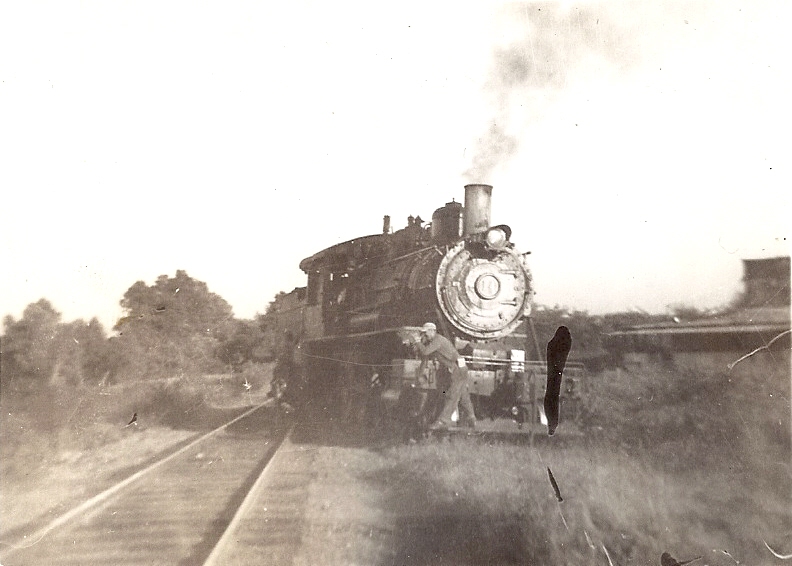 |
| #14 eases off the
Can Branch onto the mainline as the Brakeman Harry
Williamson thumbs his nose at us.
Collection of Patty Clark
Gilbride. |
|
Rahway River Branch
(a.k.a. Can
Branch, Monsanto Branch) |
|
| Switch Connection:
Mainline |
MP 0.00 |
| Grade Crossing:
N. Michigan Ave. |
MP 0.09 |
| Station: Warren
Street
|
MP ? |
| Grade Crossing:
N. 22nd Street |
MP 0.20 |
| Grade Crossing: N. 21st
Street |
MP 0.25 |
| Grade Crossing: N. 20th
Street (stop) |
MP 0.30 |
| Grade Crossing:
N. 19th Street |
MP 0.35 |
| Grade Crossing:
N. 18th Street |
MP 0.40 |
| Grade Crossing:
N. 17th Street |
MP 0.45 |
| Grade Crossing: N. 16th
Street |
MP 0.50 |
| Grade Crossing: N. 14th
Street |
MP 0.60 |
| Grade Crossing: Monroe
Ave. |
MP 0.70 |
| Grade Crossing: N. 12th
Street |
MP 0.77 |
| Grade Crossing: N. 10th
Street |
MP 0.86 |
| Grade Crossing: N. 8th
Street |
MP 0.96 |
| Rahway River Branch,
End of Track |
MP
1.042 | |
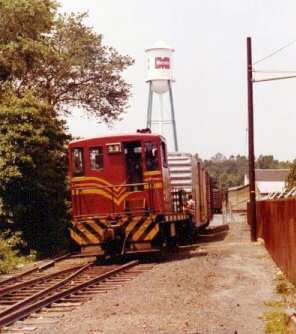 |
|
#16 switching Monsanto Corp.,
looking from N.
8th Street. | |
|
|
RAHWAY
RIVER BRANCH |
|
The Rahway River Branch was
a short one mile spur line that ran through the middle of
Kenilworth. Although it was officially known as the "Rahway
River Branch" in official reports, throughout the years it was
referred to as the Can Branch, the Laundry Branch, the
Kenilworth Branch, and later as the Monsanto Branch, most
referring to names of the customers served on the spur line,
the American Can Company and later the Monsanto Corporation.
The Rahway River Branch, originally called the
"Rahway River Extension," was constructed by the New York
& New Orange Railroad in 1900. The purpose for its
construction was to serve the Palmer Leather Company's tannery
located in the middle of
Kenilworth.
Within the plans for the branch's original
construction were two passenger depots to be located at N.
20th Street and Monroe Street. Only one of these depots, which
was more than likely a simple platform shelter, were ever
constructed. Early passenger schedules list N. 20th Street as
a stop for most trains.
After the Rahway Valley Railroad assumed the
operations of the New Orange Four Junction Railroad via a
corporate consolidation on March 1, 1905, the RV opted to move
the N. 20th Street stop eastward. The new location, near the
junction of the branch and the mainline, was named Warren
Street Station. Interestingly, there seems to never of been an
actual "Warren Street" in Kenilworth although the street
appears on the original plans for the town of New Orange.
Warren Street Station burned down on September 13,
1914.
An interesting part of the Rahway River Branch
was an S-curve which formed two perfect 90 degree curves. This
curve would prove troublesome in later years as rail cars
became ever larger. Walter Boright tells us more, "There were
numbers of instances in which the train jumped the tracks
while it was navigating the S-bend between North 12th and
North 14th streets near Halsey Street. A railroad crane would
be brought in and the locomotive or the train car would be
placed back upon the rails. In February 1973 the Chronicle
reported that the mayor and council asked the Transportation
Department to investigate the mishaps. They stated, '...there
have been three recent derailments and residents in the areas
have expressed concerns for the safety of their homes and
children.' A borough official commented, 'Some are waiting for
the train to come into their kitchens.' By and large the RVRR
had an enviable safety record as far as railroads go. James
Rego, a lifelong downtown resident, grew up near the S-bend.
He said this year, 'There were a number of mishaps. The train
crept along very slowly. I still can hear its horn blaring as
it approached that S-bend with its big steel wheels screeching
and squealing as it negotiated the curves. That�s where it
jumped the tracks every so
often.��
For being only a mile long, the branch line had
a great deal of grade crossings, sixteen in total, due to the
fact that it ran straight through the middle of a very
residential Kenilworth. Corinne Clark, remembers the headaches
these crossings used to cause for her father George Davis,
"All those crossings on the way to Monsanto were a nightmare.
My father was constantly fixing them. Almost every time it
rained they would wash out and the train would derail or come
close to it."
After Monsanto Corporation closed down in 1990,
so was the branch line. Delaware Otsego abandoned the old "Can
Branch," had the tracks torn up, and the land sold. Several
homes have been built on the former
right-of-way.
See Also: News of New
Orange. Cranford Citizen,
1900.
| |
|
Grade
Crossing
Street Name |
Wm. Wyer &
Co.
August 1944
Report on the Rahway Valley
Railroad |
Photographs |
|
N. Michigan
Ave. |
|
Michigan Ave., one track (main), macadam crossing, concrete road, vehicular heavy, 2
P.U.
signs. | |
|
|
N. 22nd
Street |
Crossing not extant at time of
report
|
|
|
N. 21st
Street |
|
21st Street, one track (main), plank crossing,
macadam road, vehicular light, 1 P.U.
sign. |
|
|
|
N. 20th
Street |
|
20th Street, one track (main), dirt crossing, dirt road, vehicular light, no
protection. |
|
|
|
N. 19th
Street |
|
19th Street, one track (main), dirt crossing, dirt road, vehicular light, no
protection. | |
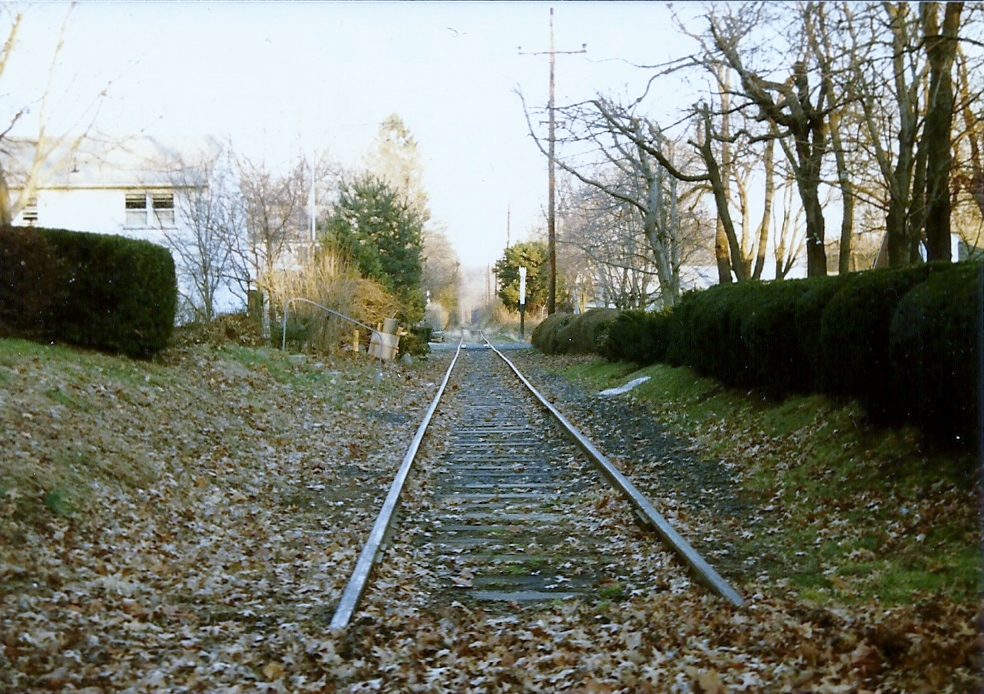 |
|
Here we look east
along the Rahway River Branch, N. 19th St. can be seen in the
distance. This photo was taken in the same location as the first on
this page. Photo taken by Jeff
Jargosch. | |
|
N. 18th
Street |
Crossing not extant at time of
report
|
|
|
N. 17th
Street |
|
17th Street, one track (main), plank
crossing, macadam road, vehicular medium,
1 P.U. sign. |
|
|
|
N. 16th
Street |
|
16th Street, one track (main), plank
crossing, dirt road, vehicular light, no
protection. |
|
|
|
N. 14th
Street |
Crossing not extant at time of report
|
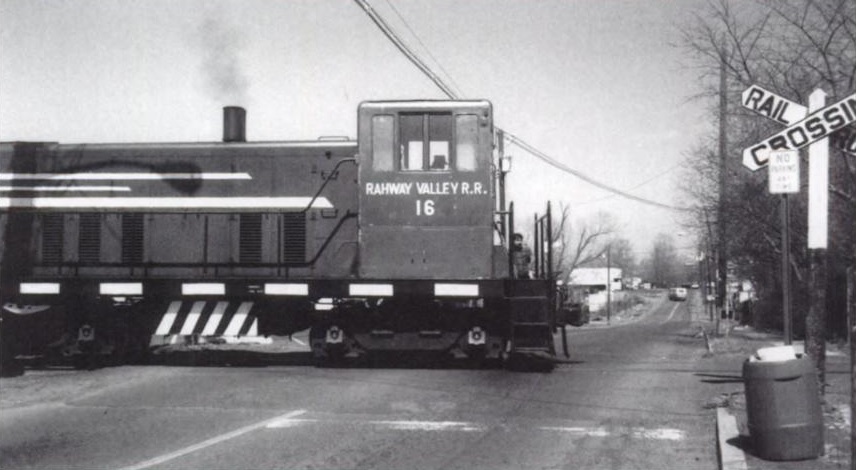 |
|
Looking
northwards on N. 14th Street we see #16 backing across the
grade crossing.
Photo taken by Jon
Franz. |
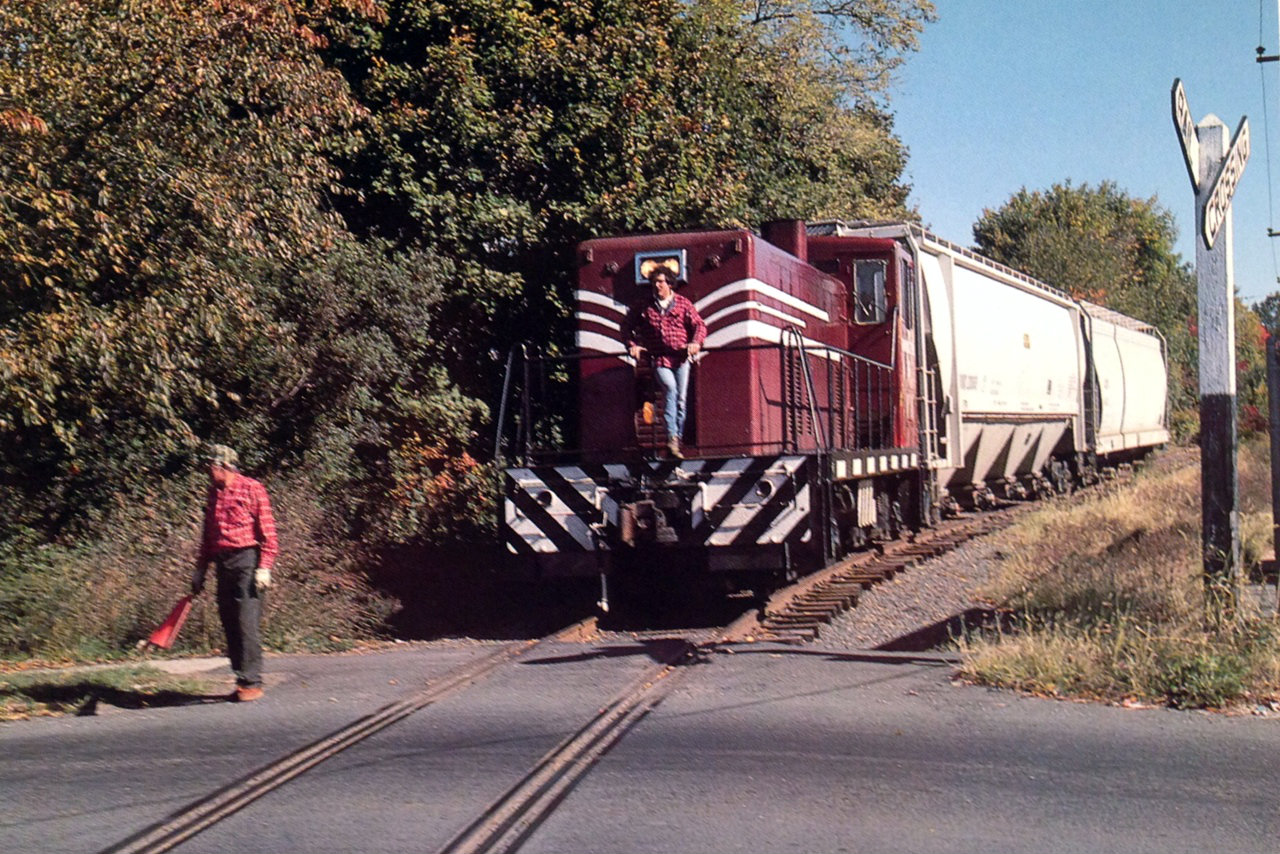 |
|
Flagging the N. 14th
Street crossing on the
Rahway River Branch.
11/1985. |
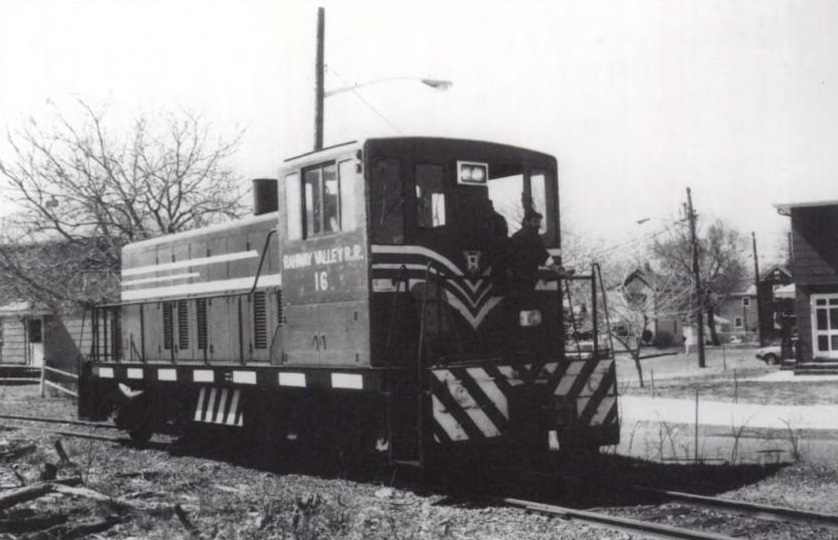 |
|
#16 trundles through the heart of
Kenilworth, as seen from the N. 14th St. grade crossing. The
houses in the background are on the corner of N. 13th and
Halsey Streets. March 28, 1986. Photo taken by
Jon Franz.
|
|
|
Monroe
Ave. |
|
Monroe Street, one track (main), plank
crossing, concrete road, vehicular heavy,
1 P.U. sign. | |
|
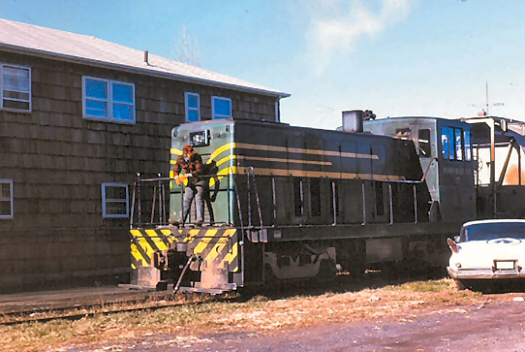
|
| #17 is
about to cross Monroe Ave. Looking northwest from Monroe Ave.
1970. Photo taken by Tom
Piccirillo. |
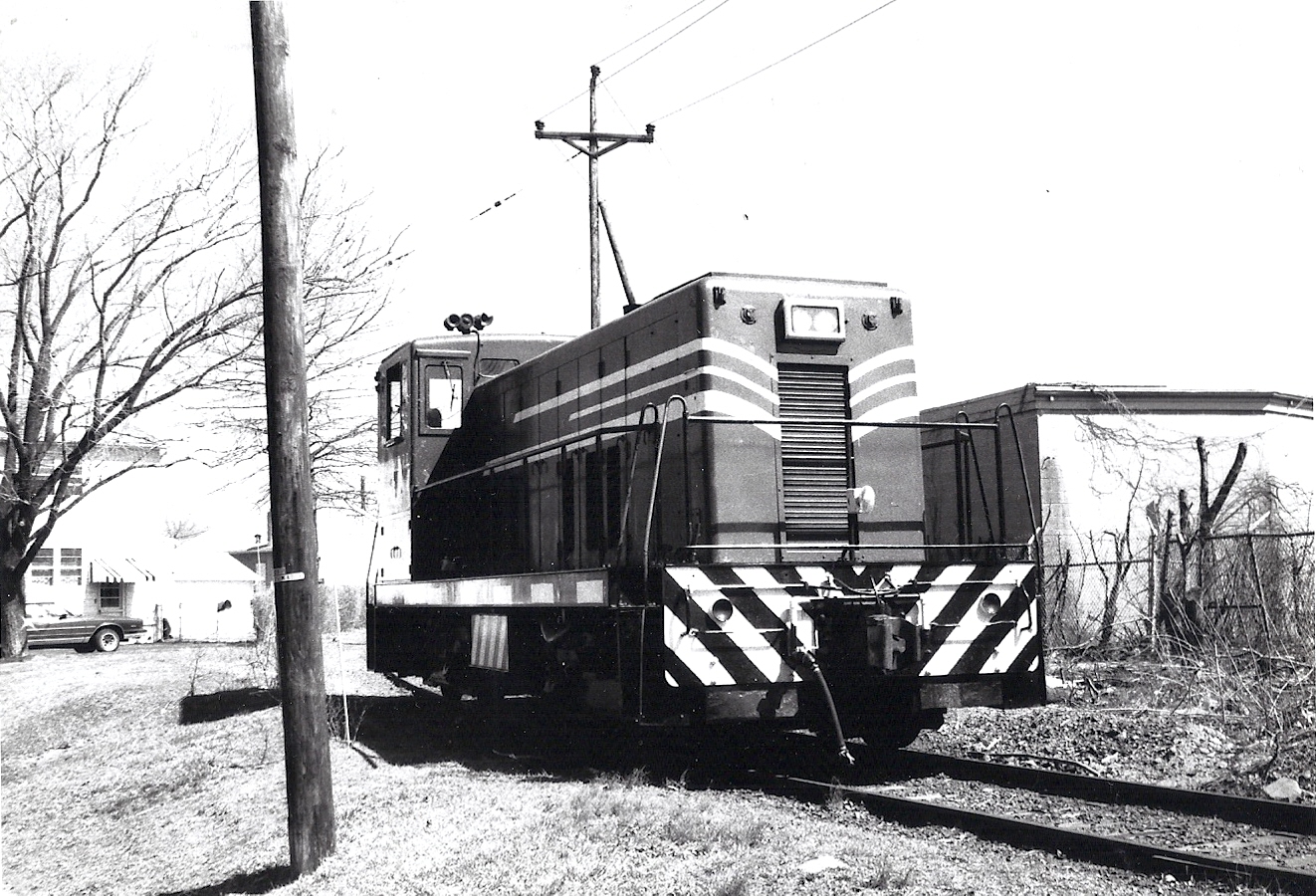 |
|
#16 on the
S-curve between N. 14th St. and Monroe
Ave. March 28, 1986. Collection of Don
Maxton. |
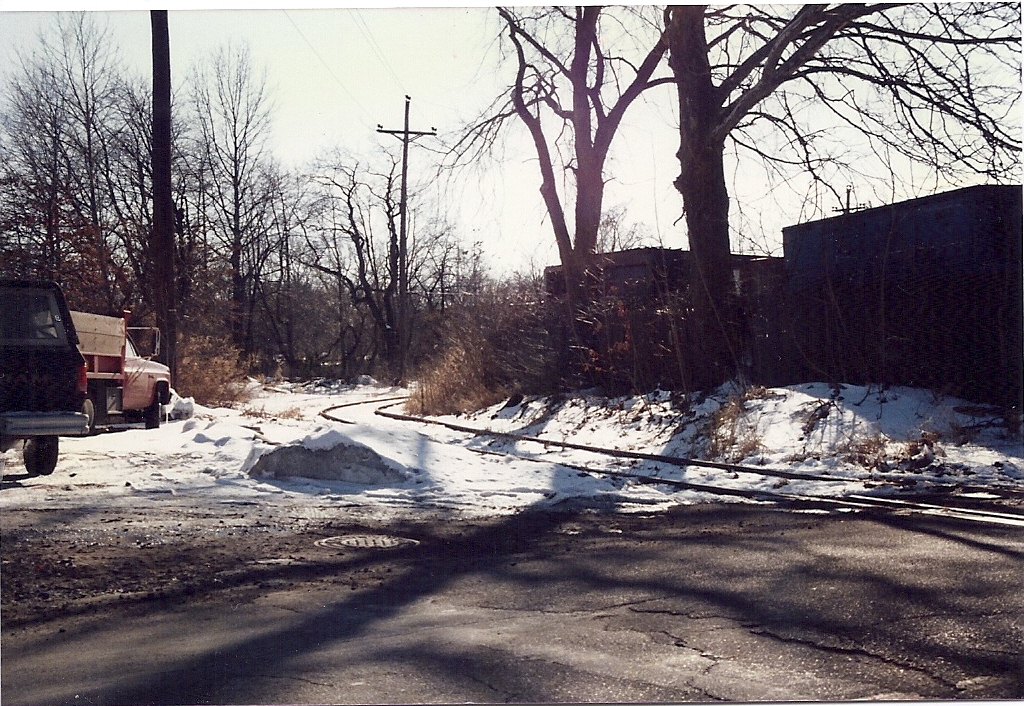 |
|
Looking south
at the S-curve, Monroe Ave. in the foreground.
Photo taken by Jeff
Jargosch. |
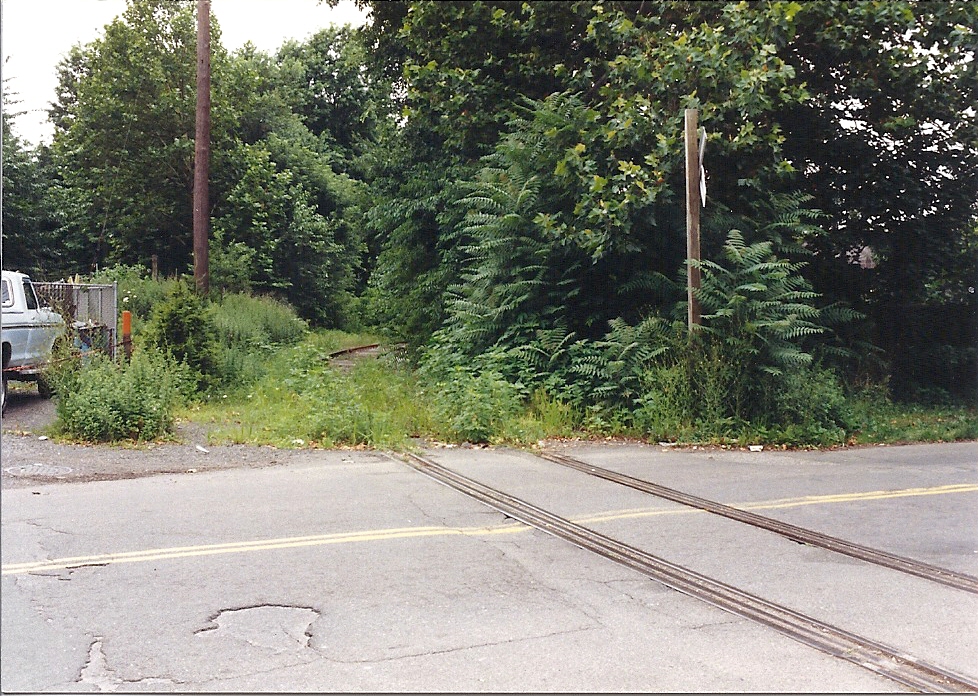 |
|
Looking south
at the S-curve, Monroe Ave. in the foreground.
1990. Photo taken by Peter Thornton,
courtesy Don
Maxton. | |
|
N. 12th
Street |
|
12th Street, one track (main), plank
crossing, asphalt/macadam road, vehicular
heavy, 1 P.U. sign. | |
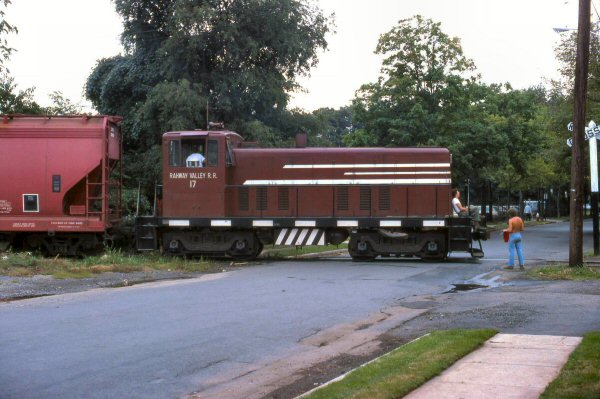 |
|
#17 crossing N.
12th St. in Kenilworth.
8/23/1977. |
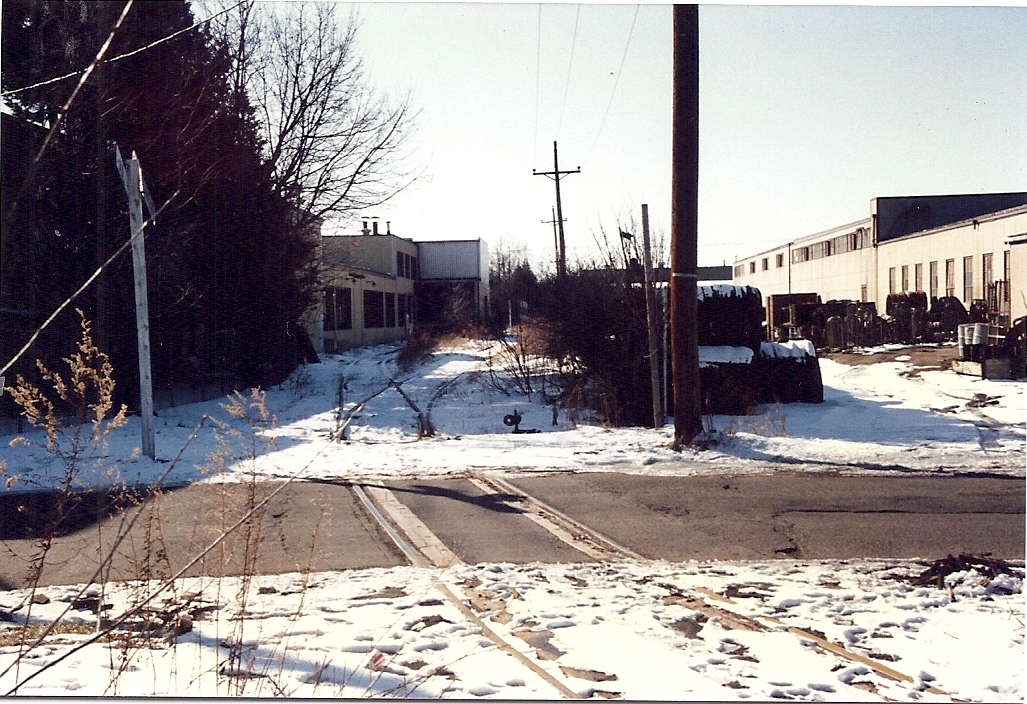 |
| Looking westward towards National Tool and
their siding, N. 12th St. in the foreground.
Photo taken by Jeff Jargosch. |
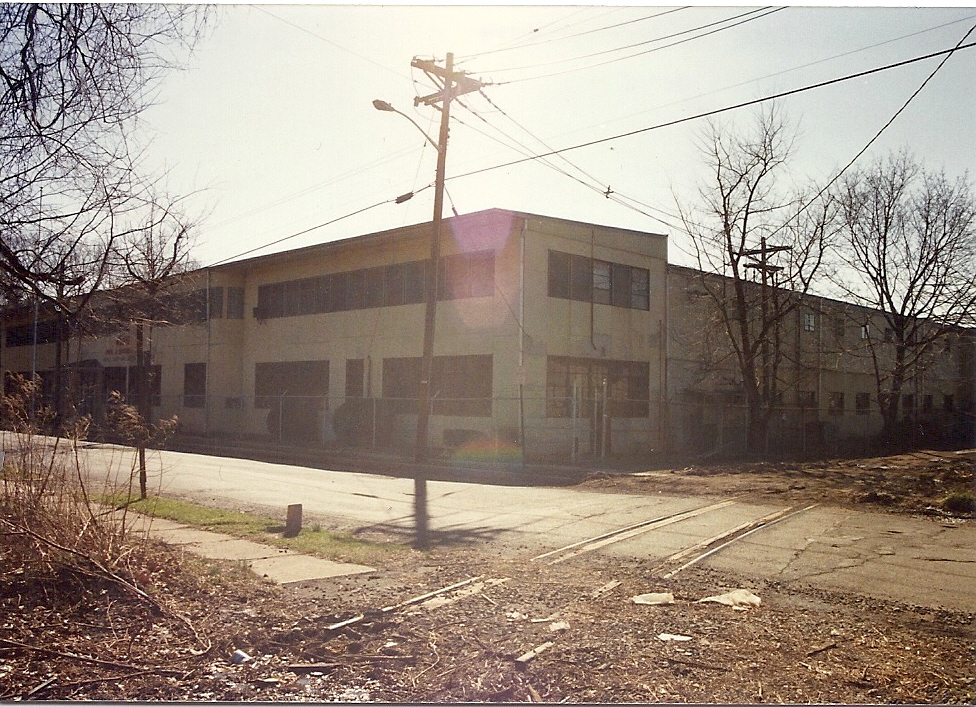 |
|
National Tool and the N. 12th St.
grade crossing after the rails were pulled up, but the rails
are still in the roadway. 3/1991. Photo taken by
Jeff
Jargosch.
| |
|
N. 10th
Street |
|
10th Street, one track (main), plank
crossing, dirt road, vehicular light, no
protection. | |
|

|
| Looking westward with N. 10th Street in the
foreground. Photo taken by Jeff
Jargosch. | |
|
N. 8th
Street |
|
8th Street, two tracks (main &
side), macadam crossing,
asphalt/macadam road, vehicular heavy, 1 P.U.
sign. | |
|
|
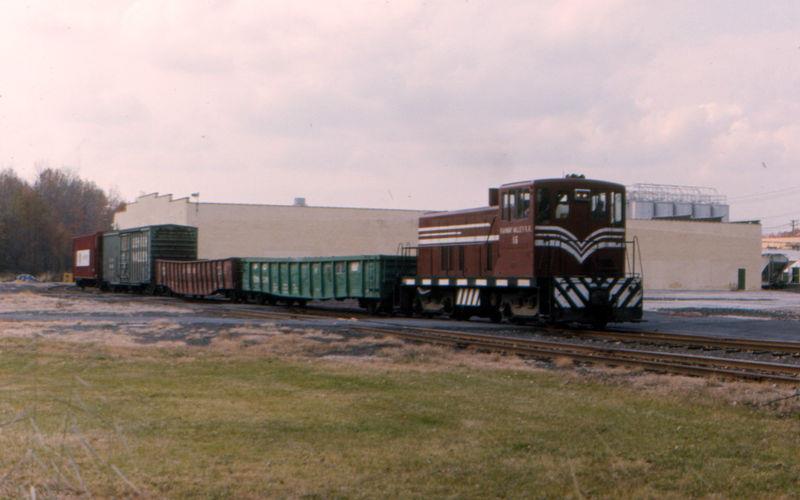
|
|
#16 is seen here switching the Monsanto
plant. |
|